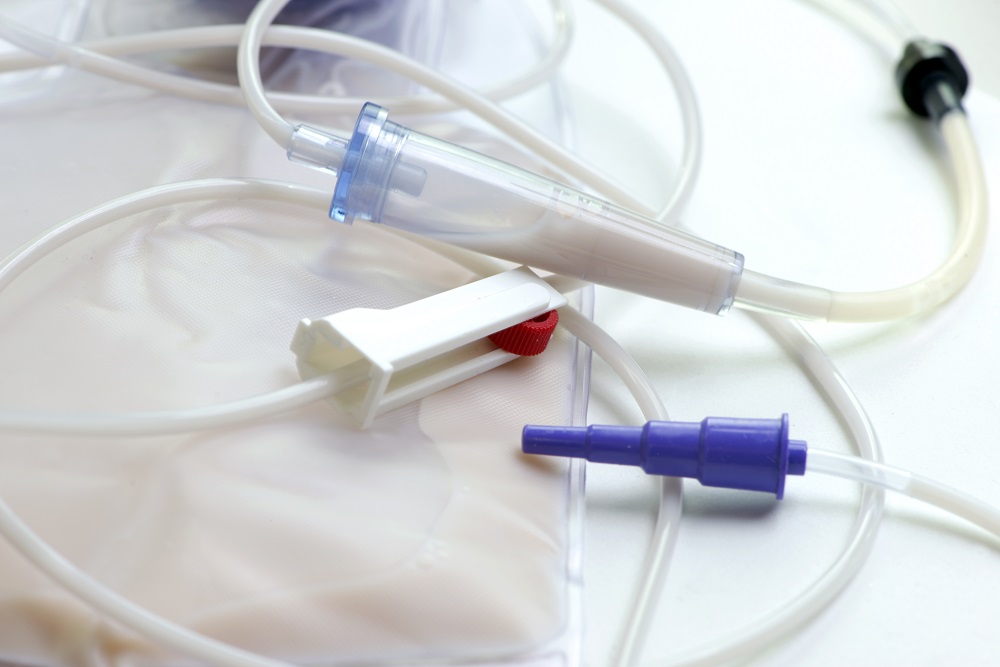Enteral feeding is a mechanism of providing essential nutrition to the body with the help of a tube that opens into the stomach. Enteral feeding is a liquid formula feed that includes carbs, protein, vitamins, minerals, fats, and other essential nutrients required to live. Doctors on the basis of patient’s requirement suggests the specific formula that can either be bought from the market or prepared at home after blending desired ingredients in to a well flowing consistency to easily pass-through feeding tube. Enteral feeding is one of the most important aspects of ventilator care.
Mechanically ventilated patients are unable to take food orally due to presence of breathing tube inside their throat. Such patients are at a high risk of passing through malnutrition and related complications like weight loss, anemia, decreased immunity, and improper cardiac or renal function. To avoid such serious outcomes patients are provided with food and energy through another tube, gastric tube. This feeding tube is connected to the stomach either through nose or surgically attached to the stomach via a hole in belly.
Methods Used for Enteral Feeding For Ventilator Dependent Patients
Ventilated patients are provided with enteral feeding using multiple methods depending on the suggestions of dietitian. Food in feeding tubes is pushed through syringe or a pump while in some cases, gravity plays the role.
Here is a look of three methods generally used of enteral feeding:
Continuous Enteral Feeding – feed is gradually delivered to the patient on a specified and controlled speed using a pump
Bolus Feeding – feed is provided in small doses several times a day using a syringe
Gravity Feeding – formula food travels in tube without any pump or syringe but under the pull of gravity. This flow is slower than other methods and controlled by a clamp attached to the feeding bag
When to Start and Stop Enteral Feeding For Ventilated Patients
Start of enteral feeding at a very early stage may prove as a support for the ventilated patients but this is still a controversial matter. It is observed that early enteral feeding decreases both the chances of complications as well as stay period of critically ill patients in intensive care.
The length of time patient needs to continue tube feeding varies as per the condition of the patient. It may last from few days to several years, depending upon the reason of tube implantation. In some though rare cases feeding tube accompanies the patient for the rest of his life.
Complications In Enteral Feeding For Ventilated Patients
Enteral nutrition though a supportive measure for ventilated patients but still some potential risks are associated with this mechanism. Patients while feeding on gastric tube are at the verge of facing some risks like:
- Skin irritation
- Risk of food entering lungs
- Tube blockage or dislodgement
- Nausea or vomit in case of displacement of tube
- Diarrhea due to liquid diet
- Infection at insertion site
- Difficulty in taking food normally after tube is removed
How To Do Nursing Care While Giving Enteral Nutrition To Ventilator Patients
Enteral nutrition is undoubtedly a good step in fast recovery of ventilated patients but it has its own downsides if not handled properly. This is the reason medical staff or any other person who is responsible to feed the patient is directed to follow special instructions while providing enteral feeding.
Generally, following key points are considered while using feeding tubes and taking care of ventilated patients:
- Always touch the tube with clean, sanitized and dry hands
- Oral hygiene of patient must be maintained properly
- Keep an eye to spot infection if patient goes through surgery
- Properly clean and keep dry insertion point of the tube
- Apply antibacterial ointment to avoid irritation, swelling, redness or infection on the surface around surgical spot
- Prevent clogging of the tube
- Sterilize tubes and other equipment regularly


